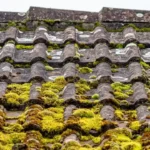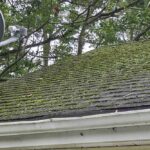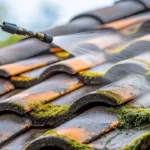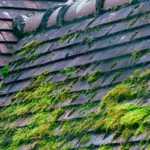As a homeowner, understanding the roof moss growth timeline is crucial for maintaining the longevity and health of your roof. Moss can be a persistent issue, especially in areas with high humidity and shade. Recognizing the stages of moss growth and implementing preventive measures can save you from costly repairs and ensure your roof remains in optimal condition.

What is Roof Moss?
Moss is a small, non-vascular plant that thrives in damp, shaded environments. While it can add a rustic charm to landscapes, its presence on roofs can lead to significant issues. Moss retains moisture, which can damage roofing materials and lead to leaks.
Initial Growth Stage
The initial stage of moss growth is often subtle and easy to overlook. It begins with the spore germination, which occurs when the conditions are favorable. During this phase, moss appears as a light green, thin layer on the roof surface.
Factors Influencing Initial Growth
- Humidity and moisture levels
- Amount of shade on the roof
- Type of roofing material
Rapid Expansion Phase
In the rapid expansion phase, moss grows more densely, forming a thicker, sponge-like mat. This period is critical because the moss begins to interfere with the roof’s ability to shed water, potentially leading to water damage.
Signs of Rapid Growth
- Thick, green patches on the roof
- Increased water retention
- Potential lifting of shingles
Mature Moss Stage
The mature stage of moss growth is when it has fully established itself on the roof, often covering large areas. At this point, the moss can cause significant damage by trapping moisture and leading to the decay of roofing materials.
Implications of Mature Moss
- Increased risk of leaks
- Damage to roof integrity
- Potential for mold and mildew
Preventive Measures
To manage and prevent moss growth, homeowners should consider several key strategies. Regular roof maintenance, including cleaning and inspections, is essential. For practical tips, visit roof maintenance tips.
Regular Cleaning
Consistent cleaning can prevent moss from establishing itself. Using appropriate tools and methods, such as a roof moss brush or sprays, can effectively remove early growth.
Improving Roof Conditions
Enhancing roof conditions by increasing sunlight exposure and reducing moisture can deter moss growth. Trim overhanging branches and ensure proper drainage to minimize favorable conditions for moss.
Professional Intervention
When moss has significantly impacted your roof, professional removal and treatment might be necessary. Experts can safely remove moss and apply treatments to prevent recurrence. Learn more about avoiding common roof moss removal mistakes.
Benefits of Professional Services
- Effective and safe removal
- Application of preventive treatments
- Comprehensive roof assessments
Long-term Implications of Ignoring Moss
Ignoring moss growth can lead to severe consequences, including roof damage and decreased property value. For more information on how moss affects home inspections, check out this inspection overview.
Potential Property Damage
Moss can cause structural damage to the roof, leading to leaks and interior damage. Understanding the potential risks is essential for homeowners.
Environmental Impact
While moss can be problematic for roofs, it’s important to consider its environmental benefits. Moss plays a role in ecosystems by helping to retain moisture and providing habitat for small organisms.
Balancing Roof Care and Ecology
Homeowners should strive to balance roof care with ecological considerations. Responsible moss management can protect your roof while supporting environmental health.
Conclusion
Understanding the roof moss growth timeline is essential for proactive roof maintenance. By recognizing the stages of growth and implementing preventive measures, homeowners can protect their roofs from damage and extend their lifespan. For further insights on roof moss and potential damage, consider reading this external resource.

FAQs
How long does it take for moss to damage a roof?
Moss can start causing damage within a year if left untreated. Regular maintenance is key to preventing issues.
Can I remove moss myself?
Yes, but it’s important to use the correct methods and tools to avoid damaging your roof. Consider professional help for extensive moss growth.
Is moss growth seasonal?
Moss growth is more prominent in wet and humid seasons. Monitoring your roof during these times is crucial.
This article contains affiliate links. We may earn a commission at no extra cost to you.








